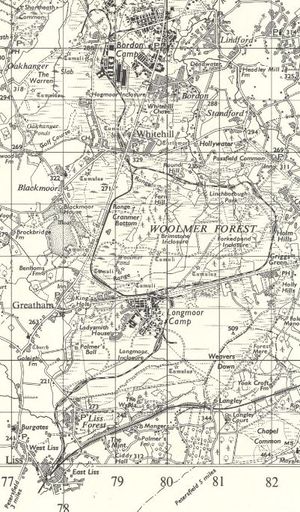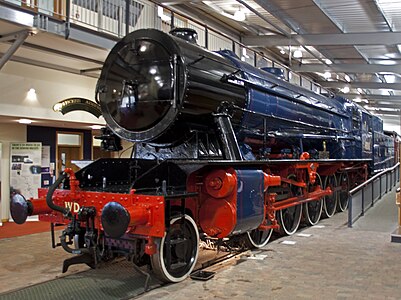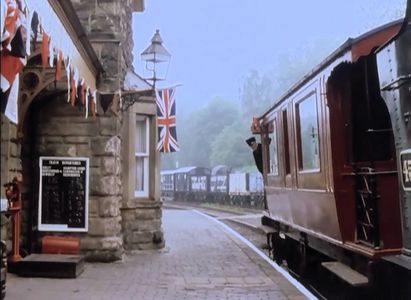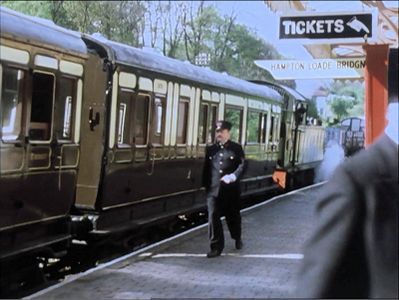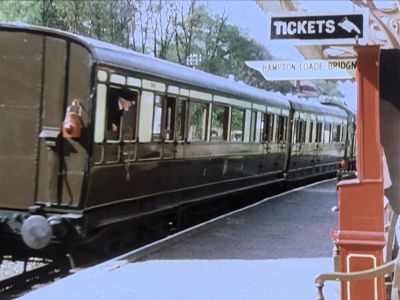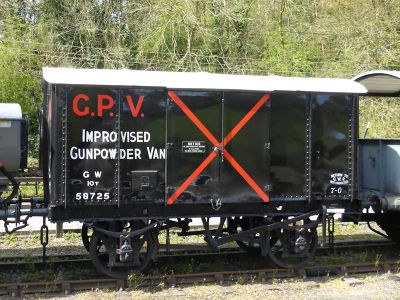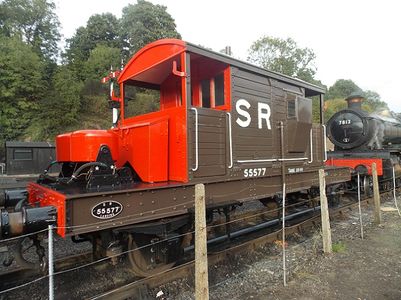Difference between revisions of "Category:Rolling stock associated with the Longmoor Military Railway"
(create page) |
(Info added) |
||
| (3 intermediate revisions by one other user not shown) | |||
| Line 4: | Line 4: | ||
In 1933 an extension was opened to a new southern terminus at Liss, with a platform adjacent to those serving the Portsmouth Direct Line. In 1942 an additional loop running eastwards from Longmoor camp was completed which enabled circular running and allowed for improved training without the need to turn trains at the terminals. | In 1933 an extension was opened to a new southern terminus at Liss, with a platform adjacent to those serving the Portsmouth Direct Line. In 1942 an additional loop running eastwards from Longmoor camp was completed which enabled circular running and allowed for improved training without the need to turn trains at the terminals. | ||
| − | Being a training railway, the layout would regularly change as track was constructed and deconstructed. At its peak the railway ran to over 70 miles of operational track and sidings. In its latter years it staged a number of open days, before operations ceased on 31 October 1969<ref>Wikipedia</ref>. | + | A Roll of Honour is displayed in [[The Engine House]] commemorating the military railwaymen of the Corps of Royal Engineers (Transportation) who lost their lives in World War II and since. It includes six sappers who were killed in an accident involving a head-on collision in foggy weather on the LMR on 13 October 1956.<ref>[https://api.parliament.uk/historic-hansard/written-answers/1956/oct/30/longmoor-military-railway-accident Hansard, Longmoor Military Railway (Accident), HC Deb 30 October 1956 vol 558 cc126-8W]</ref> |
| + | |||
| + | Being a training railway, the layout would regularly change as track was constructed and deconstructed. At its peak the railway ran to over 70 miles of operational track and sidings. In its latter years it staged a number of open days and hosted incoming railtours, before operations ceased on 31 October 1969.<ref>Wikipedia</ref><ref>The Railway Magazine, October 2019. pp. 40-46</ref> | ||
| + | |||
| + | The Children's Film Foundation film "Runaway Railway" was filmed at the Longmoor Military Railway in 1965.<ref>[https://www.reelstreets.com/films/runaway-railway-childrens-film-foundation/ reelstreets.com]</ref> | ||
The SVR has been home to a number of items of rolling stock which were formerly associated with the LMR. This category page provides links to relevant pages. | The SVR has been home to a number of items of rolling stock which were formerly associated with the LMR. This category page provides links to relevant pages. | ||
| + | |||
| + | ==Gallery== | ||
| + | ===Locomotives=== | ||
| + | <gallery mode=packed heights=200px style="text-align:left"> | ||
| + | Longmoor Military Railway Gordon Severn Valley Railway.jpg|LMR 600 Gordon | ||
| + | 48773 WD307 20180630.jpg|48773 (as WD307) | ||
| + | Fowler No. 17 Bridgnorth.jpg|John Fowler No 17 'Highflyer' | ||
| + | </gallery> | ||
| + | |||
| + | ===Carriages=== | ||
| + | <gallery mode=packed heights=200px style="text-align:left"> | ||
| + | Longmoor 3005.jpg|Saloon Army 3005 | ||
| + | Longmoor 3006.jpg|Saloon Army 3006 | ||
| + | Longmoor 3007.jpg|Saloon Army 3007 | ||
| + | </gallery> | ||
| + | |||
| + | Note: the three saloons are in fictitious GWR livery for filming purposes | ||
| + | |||
| + | ===Wagons=== | ||
| + | <gallery mode=packed heights=200px style="text-align:left"> | ||
| + | GWR 58725 20160504.jpg| GWR 58725 Improvised Gunpowder Van | ||
| + | 55577 restored.jpg|WD 55577 Brake Van (fictitious number) | ||
| + | </gallery> | ||
| + | |||
==See also== | ==See also== | ||
*[[List of rolling stock]] | *[[List of rolling stock]] | ||
| + | *[[Ron Gardner]] (former [[SVRA]] Chairman who spent his National Service at the LMR) | ||
==References== | ==References== | ||
Latest revision as of 22:02, 14 May 2021
The Longmoor Military Railway (LMR) in Hampshire was built by the Royal Engineers from 1903 in order to train soldiers in railway construction and operations. It was initially known as the Woolmer Instructional Military Railway, before being renamed the Longmoor Military Railway in 1935. The northern terminus at Bordon was adjacent to, and had rail access to, Bordon station on the LSWRLondon & South Western Railway-owned Bentley and Bordon Light Railway.
In 1933 an extension was opened to a new southern terminus at Liss, with a platform adjacent to those serving the Portsmouth Direct Line. In 1942 an additional loop running eastwards from Longmoor camp was completed which enabled circular running and allowed for improved training without the need to turn trains at the terminals.
A Roll of Honour is displayed in The Engine House commemorating the military railwaymen of the Corps of Royal Engineers (Transportation) who lost their lives in World War II and since. It includes six sappers who were killed in an accident involving a head-on collision in foggy weather on the LMR on 13 October 1956.[1]
Being a training railway, the layout would regularly change as track was constructed and deconstructed. At its peak the railway ran to over 70 miles of operational track and sidings. In its latter years it staged a number of open days and hosted incoming railtours, before operations ceased on 31 October 1969.[2][3]
The Children's Film Foundation film "Runaway Railway" was filmed at the Longmoor Military Railway in 1965.[4]
The SVRSevern Valley Railway has been home to a number of items of rolling stock which were formerly associated with the LMR. This category page provides links to relevant pages.
Gallery
Locomotives
Carriages
Note: the three saloons are in fictitious GWRGreat Western Railway livery for filming purposes
Wagons
See also
- List of rolling stock
- Ron Gardner (former SVRA Chairman who spent his National Service at the LMR)
References
- ↑ Hansard, Longmoor Military Railway (Accident), HC Deb 30 October 1956 vol 558 cc126-8W
- ↑ Wikipedia
- ↑ The Railway Magazine, October 2019. pp. 40-46
- ↑ reelstreets.com
Links
Pages in category ‘Rolling stock associated with the Longmoor Military Railway’
The following 6 pages are in this category, out of 6 total.
